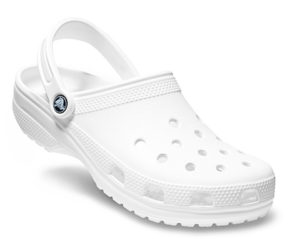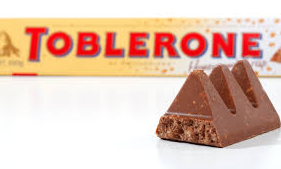Tag Archives: design infringement
Crocs’ Litigation Brings Clarity About the Overlap Between Rights Conferred by Design Registration and Rights Against Passing Off Trademark

Protecting some of the core Intellectual Properties (IP) of a business using as many different forms of IP rights as possible might seem to be a logical thought process. While some of the IP, no matter how crucial, may only be protected using only one form of IP rights, there may be others that seem to have the potential to be protected using multiple forms of IP rights. One such IP that appear to have the potential to be protected using multiple forms of IP rights is aesthetic design.
Designs that are solely judged by the eye are primarily protected by way of design registration. Generally, design of a product although appealing to the eye, the design itself does not serve the pu rpose of identifying the product with a company. In other words, generally design of the product does not perform the function of identifying the source of the product, which trademarks do. However, there are instances when design goes beyond its normal function of being appealing or judged by the eye, to also identify the source of the product, which is the primary function of a trademark. Consider Toblerone’s triangle design of the product, which is recognized as a trademark. The triangle design of the candy can associate the candy with its source, and hence rightly protected as a trademark.
rpose of identifying the product with a company. In other words, generally design of the product does not perform the function of identifying the source of the product, which trademarks do. However, there are instances when design goes beyond its normal function of being appealing or judged by the eye, to also identify the source of the product, which is the primary function of a trademark. Consider Toblerone’s triangle design of the product, which is recognized as a trademark. The triangle design of the candy can associate the candy with its source, and hence rightly protected as a trademark.
Statutes governing protection of trademarks in most countries, including India, recognize that designs of products can be trademark. However, if shape of a product is used as a trademark, then it is not considered a design in India. Section 2(d) of the Designs Act, 2000 excludes a trademark from the definition of “design”, which is protectable under the Designs Act. On the other hand, the Trademark Act, 1999 does not exclude a design registered under the Designs Act from being recognized as a trademark. Therefore, when a registered design is also claimed to be a trademark, then to harmoniously interpret the Designs Act and the Trademark Act, one of the below listed options may be adopted:
- design registration should be revoked; or
- registered design should not be considered a trademark.
In the litigation involving Crocs, the Court adopted the latter in its judgement. Crocs has design registration over the shape and configuration of a footwear and had attempted to restrain third party from infringing their design, which was not successful. The reasons for Crocs failure to get relief based on infringement of design is not discussed here, since the same is not very relevant to this article’s topic of interest. Crocs also attempted to restrain third party from copying their design on the ground of passing off. In response, the Court took the view that a registered design is not a trademark.
Although the Court has adopted the later of the above two options, I am inclined towards the former. In my view, any contention by the owner of the registered design that the design is a trademark should result in the revocation of the design registration. The design registration should be revoked since the Designs Act specifically states that a trademark is not considered a “design”. Notable, the Trademark Act, as discussed earlier, does not state that a shape of a product (design) cannot be a trademark on being registered as a design. Therefore, one can argue that the Designs Act and the Trademark Act contemplate a situation in which some registered designs over a period can acquire secondary meaning. Such a secondary meaning acquired by the design of the product enables the product to be associated with its source, which is the function of a trademark. Therefore, there can be situations in which a registered design transforms from being just a design, to a design that has the characteristics of a trademark. In the event of such transformation, the protection of the design within the Designs Act should terminate and the design should be accorded the status of a trademark.
In conclusion, in the Indian context, till such time, if ever, a registered design is provided the protection of a trademark when the design acquires the trait of a trademark, it is advisable to decide beforehand whether a design is likely to be used as a trademark. In case the design is likely to be used as a trademark, then registering the design under the Designs Act may be detrimental to the interests of the owner of the design, since design protection is for a limited period and protection of the registered design as a trademark is unlikely.
We hope this article was a useful read.
Please feel free check our services page to find out if we can cater to your requirements. You can also contact us to explore the option of working together.
Best regards – Team InvnTree
This work is licensed under a Creative Commons Attribution-NonCommercial 3.0 Unported License
Nuances of Copyright infringement by manufacture of products based on Engineering drawings

A recent judgement of the Delhi High Court in Holland L.P. and another. vs S.P. Industries calls for a debate on copyright infringement, and overlap and exclusivity between copyright and industrial design protection laws in the country.
We start by providing an overview of events that led to the dispute between the parties. Holland L.P. had designed and developed an Automatic Twist Lock (“ATL”) system, and has supplied the same to the Indian Railways over the years, with an Indian partner. Indian Railways had floated a tender in the year 2012 for replacement and repair of a list of parts of the ATL devices supplied by Holland L.P. and its partner. The Indian partner of Holland L.P. and S.P. Industries participated, with the latter emerging as the successful bidder.
In this backdrop, Holland L.P. (“Plaintiff 1”) and its partner (“Plaintiff 2”) had sought permanent injunction restraining S.P. Industries (“Defendant”) from manufacturing, selling, offering for sale, advertising, directly or indirectly ATL and parts thereto, alleging that such acts of the Defendant amounts to infringement of copyright of the Plaintiff. The Court however, ruled in favour of the Defendant.
Now referring to the particulars, engineering drawings (2D drawings) of the ATL prepared by Plaintiff 1 was made available as part of the tender by Indian Railways with permission from Plaintiff 2. The Plaintiffs contended that they are the owners of the copyright over the engineering drawings and they have the exclusive right over three-dimensional representation of the engineering drawings. In other words, the Plaintiffs contended that they have the right to prevent others from manufacturing, selling, offering for sale or advertising a product based on the engineering drawings. The Plaintiffs further contended that engineering drawings are not “Design” as per The Designs Act, 2000, since such drawings are “functional” and do not “appeal to the eye alone”. The instant contention is particularly relevant because, in case the subject matter over which the Plaintiffs are claiming copyright protection, is protectable under The Designs Act, then copyright would cease after the Plaintiffs reproduce the ATL 50 times by an industrial process, as per Section 15 of the Indian Copyright Act. The Plaintiffs had in fact reproduced the ATL systems 50 times by an industrial process.
On the other hand, the Defendant contended that the subject matter over which the Plaintiffs are claiming copyright, is protectable under The Designs Act, and since the Plaintiffs have reproduced ATL systems at least 50 times, the copyright of the Plaintiffs has ceased.
While there were various other contentions, we are particularly interested in understanding whether engineering drawings is subject matter of copyright protection alone, or are they protectable as industrial design under The Designs Act.
The Court is of the opinion that engineering drawings made for the purposes of production of ATL systems is subject matter, which is protectable as industrial design under The Designs Act. The Court is of the opinion that, any design (such as engineering/machine drawings) which is used for the purpose of industrial production of an article, is protectable as industrial design. The Court draws the instant opinion by conjoint reading of Section 2(d) of Designs Act, 2000, Section 14(c) and 15(2) of the Copyright Act, 1957.
We agree with the Court’s interpretation only in part for reasons that follows. One would agree that a set of engineering drawings would include drawings that define the way a product looks. In other words, such subset of drawings defines how the finished article/product appeal to and are judged solely by the eye. Hence, such drawings may be subject matter of industrial design protection. However, engineering drawings may also include a subset of drawings that define how certain parts, which are housed inside the product, are configured. Hence such drawings correspond to parts that are purely functional and are incapable of appealing to and being judged solely by the eye. Hence, it may be inappropriate to come to a conclusion, as the Court has, that any design which is used for the purpose of industrial production of an article, is protectable as industrial design. Our sense is that, design of product will include subject matter, such as engineering drawings of “housed/functional” parts (purely functional and not expressly contributing to aesthetics), over which only copyright protection applies, and will also include subject matter, which substantially defines how the product is perceived by the eye, which is protectable as industrial design.
Having made the above observation, it is now worthwhile to explore whether the owner of copyright over technical drawings corresponding to such functional parts (not the product as a whole, which is subject matter of industrial design protection) stop others from manufacturing such functional parts. Section 52(1) of the Copyright Act precisely deals with this matter.
Section 52(1): The following acts shall not constitute an infringement of copyright, namely:-
(w) the making of a three-dimensional object from a two-dimensional artistic work, such as a technical drawing, for the purposes of industrial application of any purely functional part of a useful device.
The above section makes it clear that, even though one may hold copyright over engineering drawings over purely functional parts, they will not be able to stop third party from producing such parts. In other words, provisions of the Copyright Act cannot be used to stop third party from producing (including other acts of commerce) such functional parts, irrespective of whether they are visible or hidden from being gauged by the eye.
In conclusion, drawings that define the way an article/product appeals to and is judged solely by the eye, is protectable as industrial design, and copyright in the same ceases to exist once the article/product is reproduced 50 time by an industrial process by the owner. Drawings of purely functional parts of an article/product are not protectable as industrial design, and only copyright protection exists. However, such copyright is not infringed by third party who produces such functional parts.
I hope you found our article informative. The judgment can be downloaded below.
Please feel free check our services page to find out if we can cater to your requirements. You can also contact us to explore the option of working together.
Best regards – Team InvnTree
This work is licensed under a Creative Commons Attribution-NonCommercial 3.0 Unported License

 Follow
Follow

